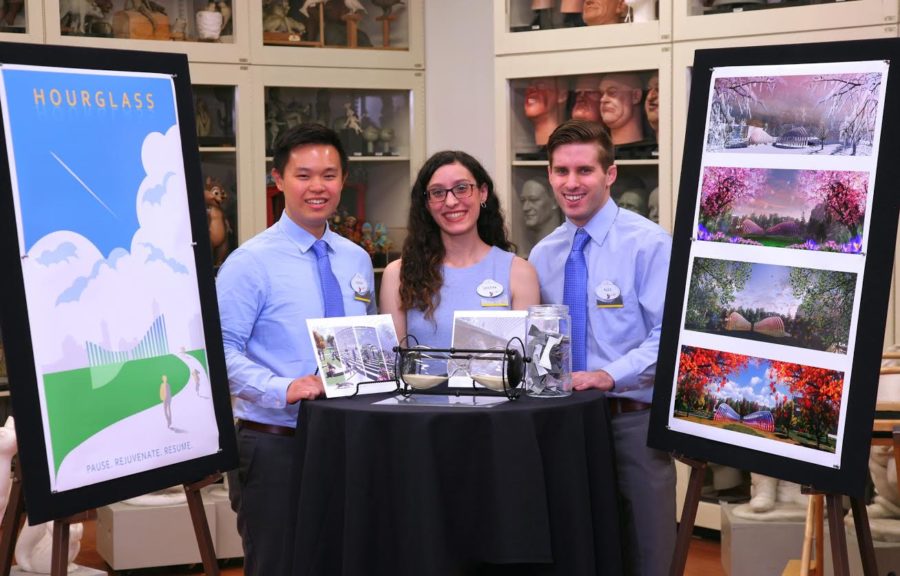Hourglass: A pause in time
Joshua Kurnia, senior in architecture, (left) Cristina Diaz, senior in interior design, (center) and Alexander Doppenberg, senior in mechanical engineering (right) participated in the Walt Disney Imaginations Design Competition.
February 1, 2017
Cristina Diaz always knew she wanted to make things come alive for people and work in Disney. In the Walt Disney Imagineering design competition, she was able to do so.
Diaz, senior in interior design, was part of a collaboration challenge with two other Iowa State students: Alexander Doppenberg, senior in mechanical engineering, and Joshua Kurnia, senior in architecture.
The challenge was to apply the same design principles used in Disney theme parks, resorts and immersive experiences to develop new outdoor spaces within their own college or university that could address the diverse needs of students, faculty and visitors, while also providing a respite of everyday life.
Starting in 1991, the challenge was dedicated to drawing out ingenuity, imagination and innovation from students around the United States. Students from colleges and universities across the nation participate in it every year.
This year’s competition began in August, and submissions were due in December. Out of more than 330 qualified submissions, 21 students from six teams were finalists. On Jan. 16, the three Iowa State students were announced as the winners of the competition.
Their concept, “Hourglass,” offers the opportunity to pause time and pull away from everyday stresses. Underground geothermal pods and heated benches accompanied with projections of nature maps offered people the opportunity to be imbued with life and vitality, as they bask in the awe of the four seasons.
“We wanted to provide a relaxation space. We chose hourglass because time is a major stressor,” Kurnia said.
Whether it’s a faculty member, student or visitor, the concept served anyone dealing with stress.
“We try to accommodate everybody. We try to make sure that it doesn’t discriminate or leave anyone out,” Doppenberg said. “Joining the Disney program developed my interest to participate in the challenge.”
The wonders of the “Hourglass” demanded coordination from every member of the team. They faced another challenge, which bore the irony of having to manage time effectively as they worked toward their five-month deadline.
“Time management was a challenge when we were working on the project,” Kurnia said. “You have people from different majors working together. I was taking 18 credits.”
Kurnia emphasized the importance of collaboration when working in group challenges like this competition and that team members must be willing to work together.
“You must understand that you aren’t the best in everything,” Doppenberg said. “You can bring what you are good at on the table, but you need others too.”
Diaz, whose task was to be creative with space, used her knowledge of interior design to help with the project.
“I had to research about the necessary materials and the functions of space for the project,” Diaz said.
Doppenberg underlined that his mechanical engineering skills proved useful in working with the “technological background” in order to achieve feasibility.
On the other hand, Kurnia admitted that he had to apply architectural principles with “graphic layouts.”
“Our goal was to connect the past and the future,” Kurnia said. “I have wanted to represent cultures, to bring in different cultures in one place.”
“I have wanted to work on something magical and make it seem real,” Doppenberg said.
















